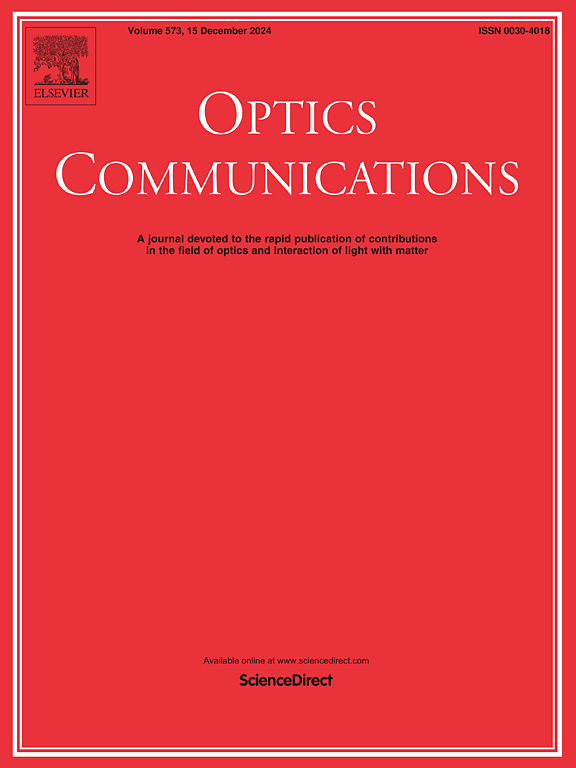Polarization-independent dual-band optical modulation via strongly coupled optical Tamm states at 1D photonic crystal heterointerfaces
IF 2.2
3区 物理与天体物理
Q2 OPTICS
引用次数: 0
Abstract
Here, we theoretically studied the strong longitudinal coupling of two optical Tamm states (OTS) in one-dimensional (1D) photonic crystal heterostructures embedded with lithium niobate (LN) layers in the near-infrared band. It is found that the two optical Tamm states can strongly interact with one another in the out-of-plane direction, enabling a large Rabi splitting (∼3.1 meV) in spectral response. The hybrid modes have an ultra-narrow linewidth of 0.85 nm with a Q factor up to 2.2 × 103. The hybridization of two OTSs was investigated by calculating field profiles and Hopfield coefficients of hybrid modes. The simulation results show that the resonant frequencies of two OTSs can be flexibly controlled by changing the structural parameters or dynamically modulating the gate voltage on the LN layers to reach zero-detuning for strong coupling generation. Remarkably, we reveal that resonant frequencies of the hybrid modes are extremely sensitive to the gate voltage on LN films while immune to the polarization of normally incident light, enabling a dual-band electro-optic (EO) modulation with an ultra-high sensitivity (0.13 nm/V) and nearly perfect modulation depth (∼99 %). The polarization-independent, dual-band, highly efficient optical modulation offered by the hybrid modes in this etchless multilayer structure can find potential applications in multi-channel light detecting, multispectral nanolasing, tunable filtering, and optical modulation devices.
求助全文
约1分钟内获得全文
求助全文
来源期刊

Optics Communications
物理-光学
CiteScore
5.10
自引率
8.30%
发文量
681
审稿时长
38 days
期刊介绍:
Optics Communications invites original and timely contributions containing new results in various fields of optics and photonics. The journal considers theoretical and experimental research in areas ranging from the fundamental properties of light to technological applications. Topics covered include classical and quantum optics, optical physics and light-matter interactions, lasers, imaging, guided-wave optics and optical information processing. Manuscripts should offer clear evidence of novelty and significance. Papers concentrating on mathematical and computational issues, with limited connection to optics, are not suitable for publication in the Journal. Similarly, small technical advances, or papers concerned only with engineering applications or issues of materials science fall outside the journal scope.
 求助内容:
求助内容: 应助结果提醒方式:
应助结果提醒方式:


